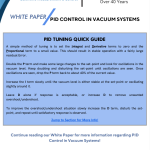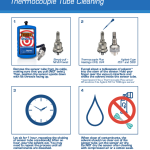
A PID Control Guide: How to Tune Your PID Controller
How to Tune the PID Controller? Tuning for PID control can be a bit complicated, since it’s all about balance and striking the perfect harmony among three different variables. Finding this balance, however, is how your automated processes will continue running smoothly. If a system is poorly tuned, several mishaps can happen, such as: Therefore, productivity can be impacted as it can make operators wait, reduce yield, or increase premature failures. For such instances, we have a white paper on our website that goes in depth about PID control in vacuum systems. Said paper also has a brief explanation on




